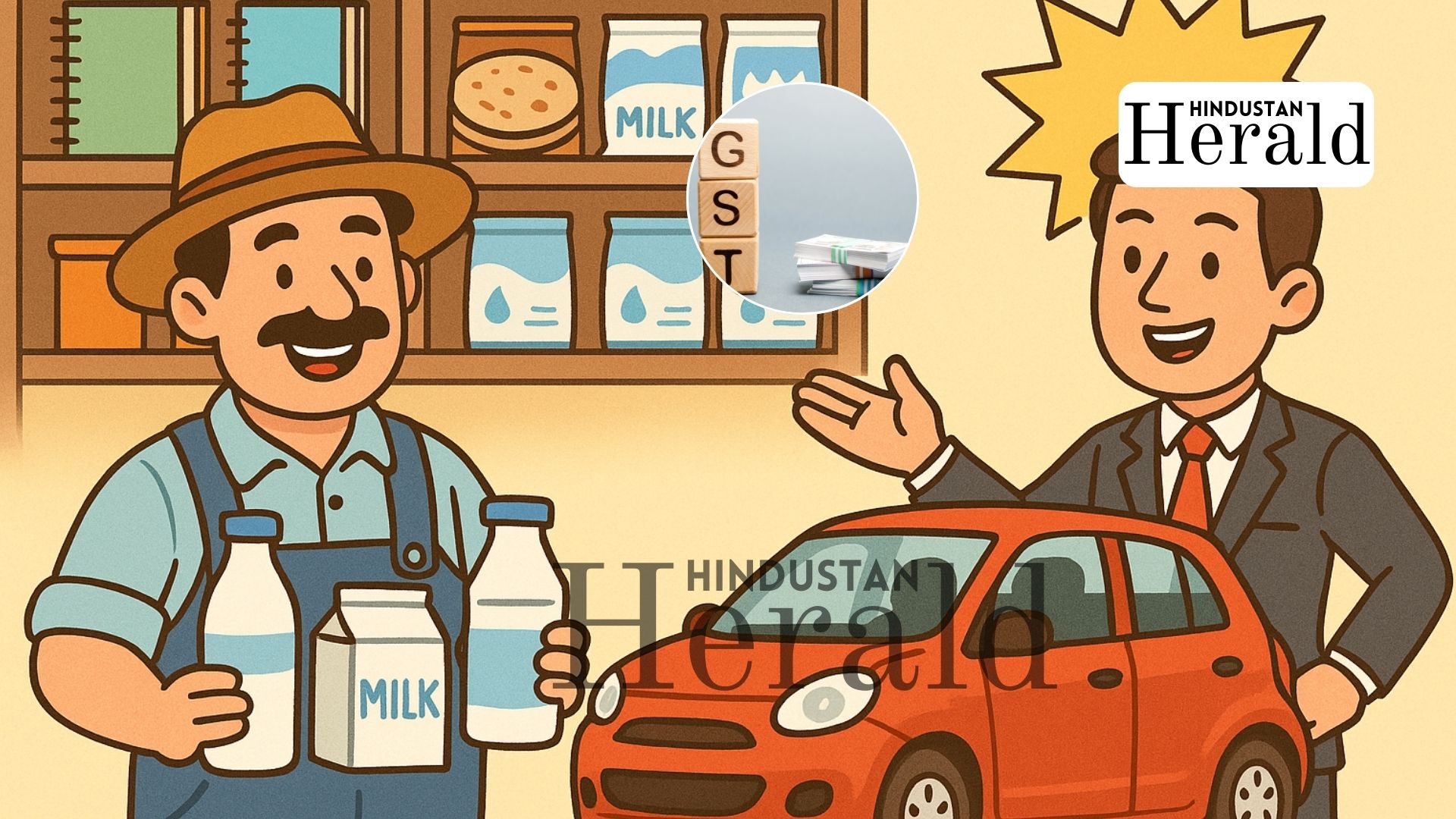New Delhi, September 24: India’s biggest tax overhaul since 2017 is beginning to ripple across markets and households, with the new GST structure (“GST 2.0”) now three days old. Prices of everyday goods, automobiles, and even insurance premiums are changing on store shelves, while industry groups and political actors are quickly recalibrating their messaging.
At the heart of this reform is a sharp simplification: multiple slabs of 5%, 12%, 18% and 28% have been replaced by just two core rates: 5% and 18%, alongside a 0% nil rate for essentials and a 40% slab reserved for luxury and sin goods. The shift, billed as a pro-consumer measure, is already producing both cheer and contention.
Dairy Sector Moves First With Price Cuts
In Mumbai, Milky Mist Dairy announced price cuts across 300 of its products, ranging from packaged paneer and cheese to value-added milk beverages. The company said it was directly passing on the tax benefits from the new GST structure to consumers. According to The Times of India, revised prices are already being implemented at modern retail outlets and kirana stores, positioning the company to capture goodwill at a time when household budgets are tight.
For the dairy sector, this is significant. Margins are typically thin, and packaged dairy often competes with unorganised players. By reducing shelf prices, large processors like Milky Mist are aiming both to gain market share and to set the tone for compliance with GST 2.0.
BJP Turns Reform Into Campaign Talking Point
In Lucknow, UP BJP president Bhupendra Singh Chaudhary listed the immediate benefits of the lower GST slabs, pointing out cheaper kitchen appliances, electrical products, and daily-use items. As reported by The Times of India, he framed the tax changes as part of the Modi government’s broader pro-poor, pro-middle-class agenda.
With elections in several states due over the next year, political parties are seizing on GST 2.0 to signal direct relief to consumers. The BJP’s messaging suggests that it intends to make this tax reform a central plank of its campaign narrative, in much the same way that demonetisation and GST 1.0 were invoked in earlier electoral cycles.
MSMEs Push For Input Relief And Automation
Not all reactions are celebratory. The Federation of Indian Micro and Small & Medium Enterprises (FISME) has demanded deeper structural fixes. According to The Economic Times, MSMEs want an automatic input tax credit refund mechanism to avoid working capital blockages and a concessional 8% GST rate on key inputs that feed into final goods taxed at 5%.
This reflects a long-running complaint: small businesses often face a mismatch between input taxes paid and the lower rate at which they sell their goods. Without timely refunds, cash flow becomes strained. The government’s success in addressing this grievance may determine how widely GST 2.0 is accepted among India’s 6.3 crore small businesses.
What’s Cheaper, What’s Not
The CBIC’s Ready Reckoner, issued on 22 September, lays out the specifics:
- 0% GST now applies to books, pencils, erasers, notebooks, UHT milk, parathas/rotis, and life & health insurance policies.
- 5% GST continues for essentials like packaged food items.
- 18% GST has become the default for a wide range of consumer durables and services.
- 40% GST now targets tobacco, premium automobiles, high-end spirits, and luxury goods, making them costlier than before.
Consumers are already seeing price cuts in cars, two-wheelers, televisions, refrigerators, and washing machines. Automakers such as Tata Motors and Maruti Suzuki have announced reductions of up to ₹2 lakh on select models, according to industry reports.
Political And Economic Stakes
This reform, dubbed GST 2.0, has twin objectives: simplifying the tax architecture and increasing compliance. A two-slab system reduces classification disputes that often clog tribunals and courts under GST 1.0. At the same time, a sharper luxury tax bracket of 40% is designed to protect revenue neutrality by taxing the top end of consumption.
Politically, the rollout comes at a time when the government is eager to present itself as responsive to inflation concerns. With food and fuel prices under pressure in recent months, a visible reduction in appliance and grocery bills could provide immediate relief to households.
Economically, however, much will depend on whether small enterprises feel adequately supported. The clamour from FISME indicates that compliance ease and liquidity are still unresolved bottlenecks.
The Road Ahead
The government is expected to monitor the first quarter of GST 2.0 closely. If input tax mismatches persist, a corrective circular or rate adjustment may follow. Analysts also caution that a 40% slab risks fueling a grey market in luxury goods if enforcement is weak.
For now, consumers appear to be the early winners. Dairy, automobiles, and household electronics are cheaper, traders are advertising discounts, and political leaders are touting the benefits. But whether GST 2.0 turns into a long-term structural success or a short-term relief measure will hinge on execution, particularly for India’s sprawling MSME base.
Stay ahead with Hindustan Herald — bringing you trusted news, sharp analysis, and stories that matter across Politics, Business, Technology, Sports, Entertainment, Lifestyle, and more.
Connect with us on Facebook, Instagram, X (Twitter), LinkedIn, YouTube, and join our Telegram community @hindustanherald for real-time updates.
Former financial consultant turned journalist, reporting on markets, industry trends, and economic policy.






